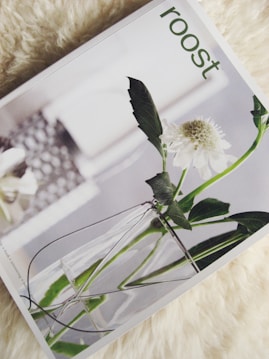Ghostwriting for Art Catalogues: Translating Visuals into Words
Bibliotheca Exotica
3 min read


The Art of Ghostwriting for Art Catalogues
Writing for art exhibitions, museums, and catalogs is a niche that requires a unique set of skills. As a ghostwriter, your task is not only to describe the artwork but also to capture the essence of the artist's vision and convey it to the audience through words. In this blog post, we will explore the world of ghostwriting for art catalogues, discussing effective strategies for describing artwork, collaborating with artists and curators, and the skills needed to succeed in this field.
1. Describing Artwork: From Visuals to Words
When it comes to describing artwork, the challenge lies in translating the visual experience into words. As a ghostwriter, you need to create a vivid and engaging description that captures the essence of the artwork and evokes emotions in the reader. Here are a few strategies to help you effectively describe artwork:
Observe and Analyze: Take the time to carefully observe the artwork, noting its colors, textures, composition, and overall mood. Analyze the artist's techniques and intentions behind the piece.
Use Descriptive Language: Choose words that paint a picture in the reader's mind. Use sensory language to describe how the artwork looks, feels, and even sounds.
Provide Context: Help the reader understand the significance of the artwork by providing historical, cultural, or artistic context. Explain the artist's inspiration or the symbolism behind the piece.
Evoke Emotion: Art has the power to evoke strong emotions. Try to capture the emotional impact of the artwork in your description, whether it's awe, joy, melancholy, or contemplation.
By employing these strategies, you can effectively bridge the gap between visuals and words, allowing the reader to experience the artwork through your description.
2. Collaborating with Artists and Curators
As a ghostwriter for art catalogues, collaboration is key. Working closely with artists and curators is essential to ensure that your writing accurately represents their vision and intentions. Here are a few tips for successful collaboration:
Research and Familiarize: Before meeting with the artist or curator, do your research. Familiarize yourself with their previous works, artistic style, and any relevant information that will help you understand their perspective.
Ask the Right Questions: During your meetings, ask thoughtful questions that delve into the artist's creative process, inspirations, and intentions behind the artwork. This will help you gain a deeper understanding of their work.
Active Listening: Listen attentively to the artist or curator's feedback and suggestions. Take notes and make sure to incorporate their insights into your writing.
Regular Communication: Maintain open lines of communication throughout the project. Regularly update the artist or curator on your progress and seek their input to ensure that your writing aligns with their vision.
By establishing a strong collaborative relationship, you can create a cohesive and authentic catalogue that accurately represents the artist's work.
3. Skills Needed for Success
Ghostwriting for art catalogues requires a combination of writing skills and art appreciation. Here are some essential skills needed to succeed in this field:
Artistic Sensibility: Develop an understanding and appreciation for various art forms, styles, and movements. This will enable you to accurately interpret and describe the artwork.
Strong Writing Skills: As a ghostwriter, you need to have excellent writing skills. This includes a command of language, the ability to craft engaging narratives, and a keen eye for detail.
Research Abilities: Thorough research is essential for providing accurate historical, cultural, and artistic context for the artwork. Develop strong research skills to ensure the credibility of your writing.
Adaptability: Each artist and exhibition is unique. Being adaptable and able to adjust your writing style to match the artist's vision is crucial for success.
Attention to Detail: Art catalogues require meticulous attention to detail. Ensure that your writing is free from errors and inconsistencies.
By honing these skills, you can excel in the field of ghostwriting for art catalogues and create compelling narratives that bring artwork to life.
Conclusion
Ghostwriting for art catalogues is an art form in itself. It requires the ability to translate visuals into words, collaborate effectively with artists and curators, and possess a unique set of skills. By following the strategies discussed in this blog post and continuously honing your craft, you can become a successful ghostwriter in the world of art exhibitions, museums, and catalogs.

